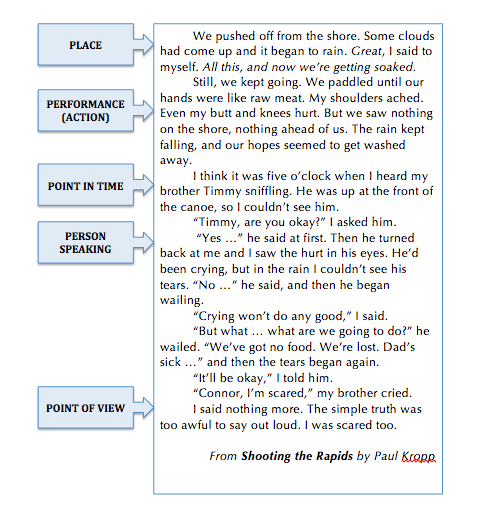Paragraphs are sentence groupings that serve to break a large section of text into manageable chunks for a reader.
 Back in 1866, Scottish educator Alexander Bain set forth his rules for the “organic paragraph.” He stipulated that every paragraph should begin with a topic sentence, followed by several sentences to develop that topic.
Back in 1866, Scottish educator Alexander Bain set forth his rules for the “organic paragraph.” He stipulated that every paragraph should begin with a topic sentence, followed by several sentences to develop that topic.
Bain’s model would prove durable until the 1960s (and remains durable in many classrooms today), at which point writers began to question it as too simplistic, too prescriptive, and not reflective of the way writers really write.
While Bain’s rules still apply in general to much expository text, topic sentences might be found at the beginning, at the end or even buried in the middle of a paragraph. Narrative paragraphs, on the other hand, rarely have topic sentences, and may reflect a wide range of structures, from one sentence (or even one word) of dialogue to a whole page of description. So how can we help students use paragraphs effectively for both reading and writing narrative text?
FIVE Ps of PARAGRAPHING
Check out the Support for Struggling Readers Blog posting: Let’s Stop Teaching the Hamburger Paragraph.
See also: Topic Sentence Treasure Hunt
Click on the image at the left to download the excerpt from Shooting the Rapids. Display the text for st udents to read together and invite them to speculate on why the author choose to make the paragraph breaks as he did. Guide students to identify the following five guidelines for starting a new paragraph:
udents to read together and invite them to speculate on why the author choose to make the paragraph breaks as he did. Guide students to identify the following five guidelines for starting a new paragraph:
- when a new PERSON speaks
- when there’s a change in the PERIOD of TIME
- when there’s a change in the PLACE
- when a different ACTION is PERFORMED
- when there’s a change in POINT of VIEW
Have students open a book of their choice to a random page. Have them take note of the paragraph changes and which of the 5 Ps criteria they fit. Remember that these are just guidelines. It’s possible that some paragraphs won’t fit any of the criteria; sometimes authors change paragraphs when a situation changes or to build suspense.
WHY DOES PARAGRAPHING MATTER TO READERS?
Knowing when to start a new paragraph is important to writers. But it’s also important to readers. In fact, the whole reason writers use paragraphs is to break up a block of text to make it more readable. Writers use paragraphs to send important messages to readers about changes in the setting or plot direction. When readers are aware of these cues, they are better able to understand the nuances of the text.


